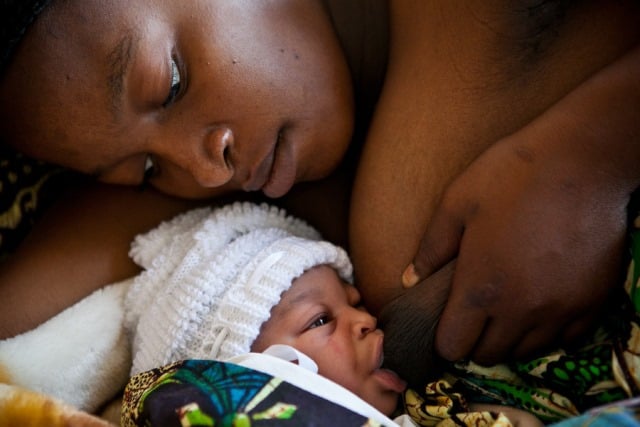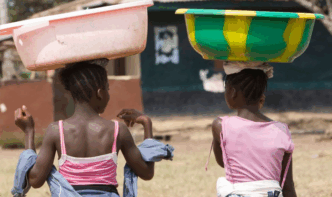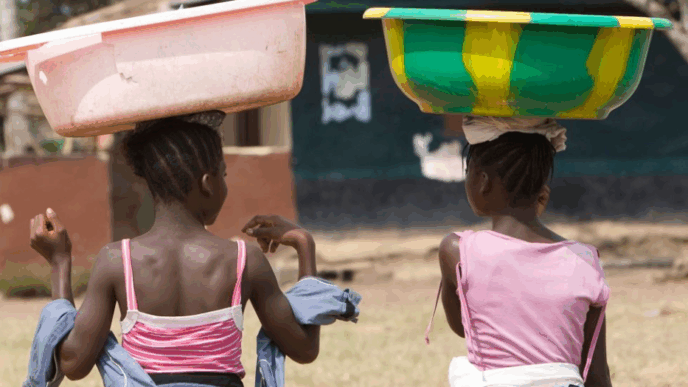BY HUSSEIN ADOTO
The World Breastfeeding Week started on Friday, August 1st, with the theme Prioritise Breastfeeding: Creating Sustainable Support Systems. I wholly endorse the theme because it seeks to create “enduring, equitable frameworks that support breastfeeding mothers and empower families.”
With such frameworks, women will be empowered “to initiate breastfeeding within the first hour of birth, breastfeed exclusively for six months, and continue alongside nutritious complementary foods up to breastfeed their babies for at least 24 months.”
The need to create sustainable support systems for breastfeeding is premised on its value, not only as a personal choice, but as a public health imperative. Breastfeeding lays the foundation for a child’s long-term health, bolstering their immunity and reducing the risk of preventable illnesses that too often lead to hospital visits or missed days in school.
Advertisement
But its benefits extend far beyond infancy. It supports maternal health, strengthens family bonds, and reduces household and public expenditure on health. Surely, everyone has a lot to gain by supporting breastfeeding.
And yet, a recent second-hand encounter—narrated to me during a hospital rotation—offered a sobering reminder of how fragile this support can be.
A mother had come to the clinic, cradling a malnourished child. The child had no apparent disease to suggest what was eating him up from the inside out. There was no diarrhoea, vomiting, or fever to suggest an infection. The only concern was that the child wasn’t growing well.
Advertisement
“I asked (the mother) if she was breastfeeding the child,” said the consultant. “She looked away, hesitated, then said yes.”
It’s not uncommon for mothers to struggle with breastfeeding a few days after giving birth. Women who deliver via Caesarean section, for instance, may not produce enough milk due to the anaesthesia, the stress of the surgery, or delayed contact with their baby. Others may produce enough, but they do not feed their children properly. Either the baby’s latching is poor, or the mother feeds the child thrice daily as though the child were an adult.
The consultant suspected that the woman’s “yes” wasn’t telling the whole story. She felt the response was guarded. “I sent the students outside and asked the woman to let me see her chest.”
Women with painful or cracked nipples struggle to feed their children. Their pain won’t allow them, but they fear being judged as weak if they complain. They may also be embarrassed to show their breasts to get help with positioning or latching issues, so the consultant thought to give her the privacy to open up.
Advertisement
Alas, the woman’s problem wasn’t mastitis, or cracked or inverted nipples. It was worse: a scar tissue had covered her chest, as though she had been drenched with boiling water!
Her breasts bore the scars of breast ironing, a traditional practice that had destroyed her ability to produce milk for her baby.
“I have never seen such a case in my practice. I was surprised that anyone still practices breast ironing anywhere,” the consultant remarked.
I wasn’t.
Advertisement
A few weeks before my rotation through the consultant’s clinic, my colleagues and I had presented a seminar on harmful traditional practices. Breast ironing was one of the practices we discussed.
Breast ironing is a traditional practice meant to delay the appearance of puberty by flattening young girls’ developing breasts, often using hot stones, pestles, or other hard objects. The UN estimates that there are about 3.8 million victims of breast ironing worldwide, with the majority of them in Africa. Last year, The Guardian Nigeria reported that some communities in Abuja and Niger State still practice it. Many of these victims remain unseen because they are suffering in silence.
Advertisement
Some victims of breast ironing girls end up with lifelong trauma. They live with constant pain. Their chest becomes disfigured; their breasts become weak and saggy; their glandular tissues and alveoli, which produces and stores breast milk, may also get permanently damaged in the process. The woman who presented with her child had such complications, which left her unable to produce enough milk.
Her parents probably thought they were protecting her as a child when they held her down and pressed her chest with hot materials. And there she was, now a mother, watching her own baby suffer the consequence of a trauma handed down in silence. That needs to change.
Advertisement
Creating sustainable support systems for breastfeeding should not start only with mothers who are ready, willing, and capable of breastfeeding. We must begin by ensuring that women arrive at motherhood ready and whole, unscarred by the cultural practices that render their bodies incapable of nurturing the next generation.
It’s not enough to call for breastfeeding-friendly workplaces and maternal leave policies. Although we need those frameworks, they will not hold if the women they are meant to serve are physically or emotionally impaired and rendered incapable of breastfeeding.
Advertisement
Eradicating harmful practices like breast ironing should not be treated as separate from the work of promoting breastfeeding; it’s the foundation. It shields women from trauma, spares children from inherited suffering, gives families a fair chance at health, and protects the country from adding yet another statistic to our public health burden.
In a country still grappling with high infant and maternal mortality rates, ending this silent tradition is more than a cultural reckoning. It is a public health necessity.
Views expressed by contributors are strictly personal and not of TheCable.










